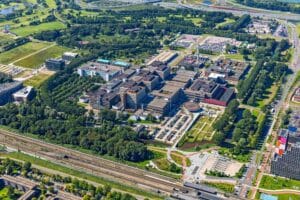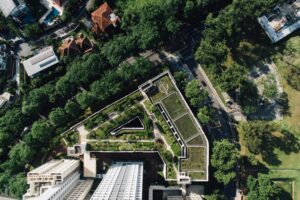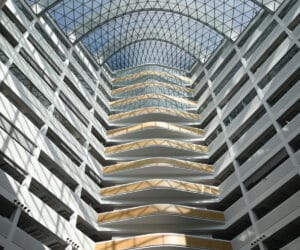
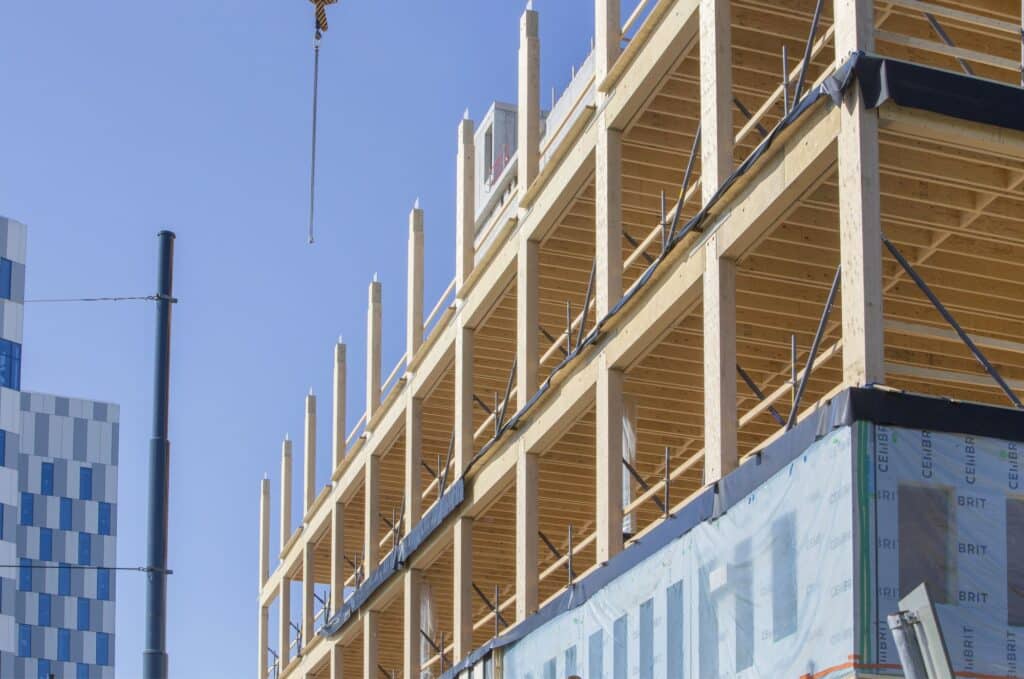
Biobased construction: the number one solution for a sustainable world?
The urgency is clear, we need to become more sustainable quickly. And according to Sandra Nap – founder of Holland Houtland – the materials we use play a decisive role in making construction and agriculture more sustainable. She believes innovations in the field of biobased construction to be the number one solution. How? It’s all in this interview.

You have a passion for innovation. How did you end up with biobased construction?
I have always been intrigued by what you can achieve with innovation. And sustainable issues provide a great trigger to scrutinize everything we do and do it completely differently. Biobased construction offers a good solution for drastically reducing our consumption of materials and that has an impact on everything: our water and energy consumption, nitrogen emissions, carbon emissions, but also on issues such as biodiversity. The impact is enormous and the developments are interesting. The next step is actually applying innovation in the market.
How do you think biobased construction will save the world?
Ha ha, that’s simple! Flax, wood and hemp absorb carbon, which is quite significant. By building biobased, you build houses with relatively low carbon emissions and the house will subsequently absorb carbon too. So you can build as much as you want, without selling the earth short. That’s super cool, because you can innovate and experiment with new shapes and designs at the same time. In short: a multitude of possibilities to discover!
On top of that: biobased living is healthy living. The materials work like a Gore-Tex jacket: they insulate well and are breathable. As a result, the air quality in a biobased building is much better than in many of our current homes and buildings.
At present, there is also much resistance to biobased construction. How do you feel about that?
There is already enough residual material from Dutch grain to build 100,000 houses a year from straw. We also have sufficient flax and horticultural residual streams to scale up. So no farmland or nature area needs to be sacrificed for biobased construction. In time, we will also have to shift to a more plant-based diet, because the quantities of meat and dairy we consume are not healthy. That means a lot of agricultural land will become available.
“There are many innovations ahead and they are following each other in rapid succession. For example, hybrid applications with different plant materials. Before you know it, we will be able to use far more straw, hemp and flax in high-rise buildings.“
– Sandra Nap, Holland Houtland
What is the role of Holland Houtland in scaling up biobased building?
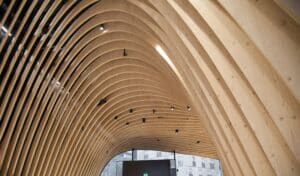
For us, biobased building means building with all wood fibres. So not only wood, but also straw, hemp, flax or bulrush, for example. Holland Houtland aims to scale up the market for biobased construction. As a network organisation, we help companies, housing corporations and municipalities with the actual application. For example, the Municipality of Capelle aan den IJssel wished to build a sustainable housing estate on a sodden peat bog. Holland Houtland has shown that biobased materials are much lighter and therefore very appropriate for this task. We have also shown which parties can carry out this task. In short: we make the supply of biobased products visible and accessible, so that companies and public authorities can get to work immediately.
You also carry out market analyses of the supply of biobased building materials. Is there enough supply and perhaps just as importantly, is there enough demand?
That’s the chicken and the egg story, unfortunately. There is currently sufficient supply. There is, as said, enough Dutch straw to build 100,000 houses per year! The knowledge for the application is already there. But the challenge is in scaling up. To scale up, large-scale prefab-construction factories are needed. Biobased construction is very suitable for this. But investing in factories also requires a clear demand. That demand is now held back by factors such as price and lack of knowledge on the part of potential clients.
How do you think this problem can be solved?
A strategy is needed that links the acceleration of housing construction to energy transition. There is currently too much focus on affordable housing. But if you want something new, it’s hard to compete with what exists. The production of concrete, bricks and cement depends on a lot of energy and water, but that is very cheap for bulk consumers. That is why we want to reward housing construction for its contribution to social problems. Think, for instance, of a reward based on carbon reduction or avoidance of nitrogen emissions, which makes biobased financially more attractive. And besides a financial incentive, more attention is needed for biobased building.
“The focus in the energy transition will in any case shift towards biobased. If politicians want to build one million new houses in the next ten years AND stay within the 1.5 degrees of the Paris Agreement, they have to do it right the first time and use the right materials.“
– Sandra Nap, Holland Houtland
You indicated that innovations play an important role in biobased building.
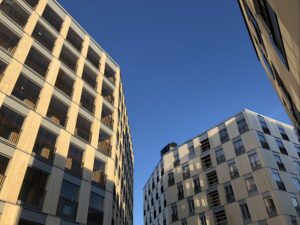
What do you think the Netherlands will look like in 15 years?
By then, at least 80% of our new buildings will be biobased. Look at Wood City in Helsinki. That is an inviting prospect for urban planners and project developers, but also for banks, insurance companies and for future residents! I wish the Netherlands all the best in developing its own very splendid ‘wood & biobased cities’.
*Photocredits: © Stora Enso




